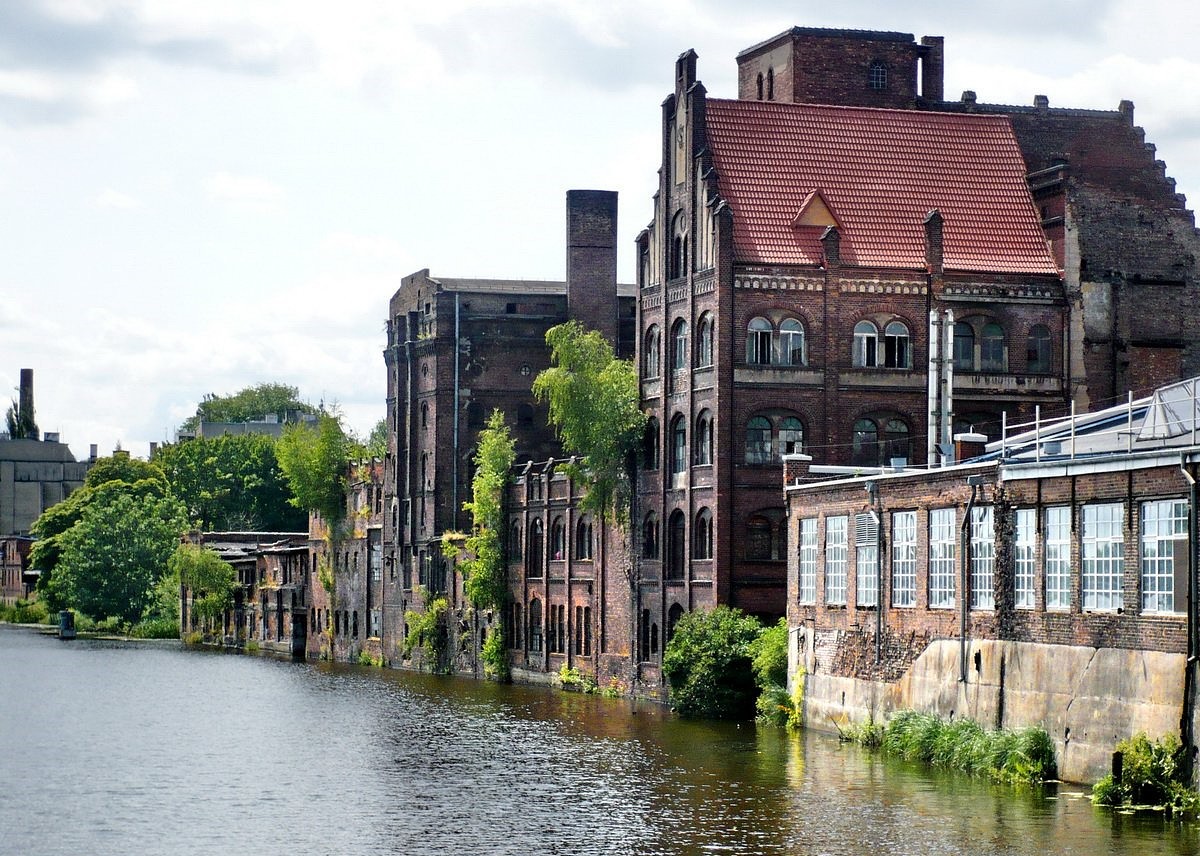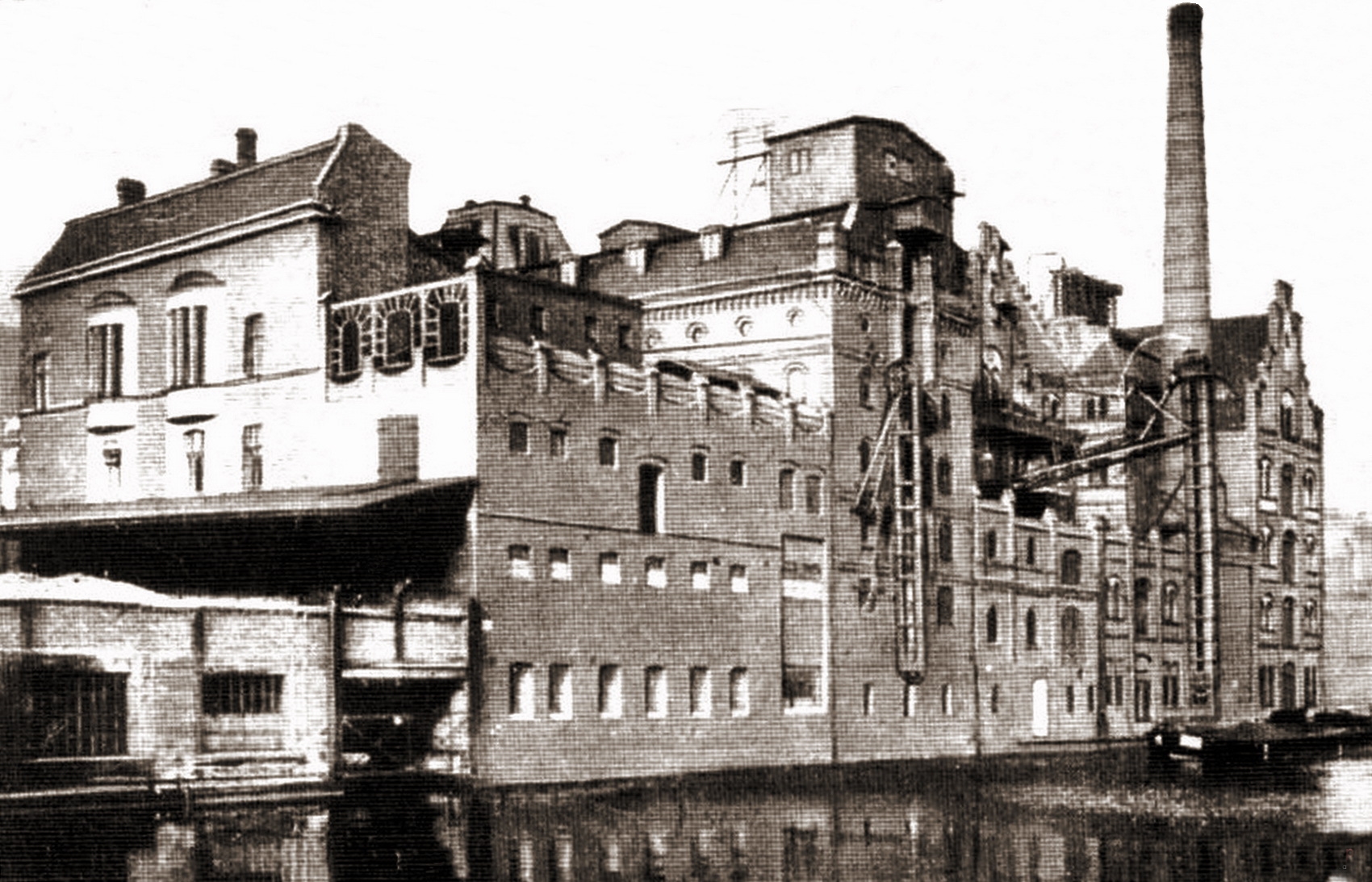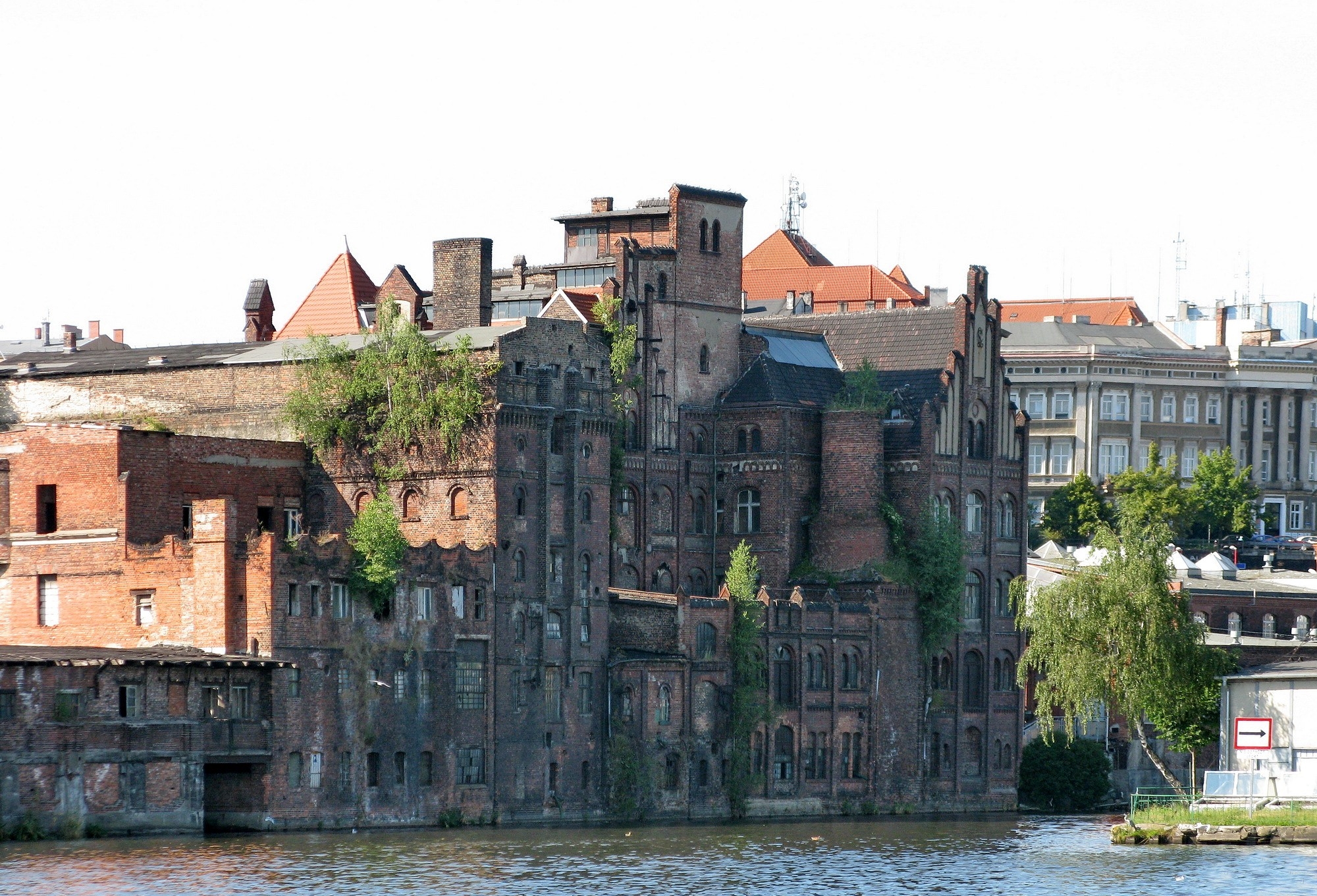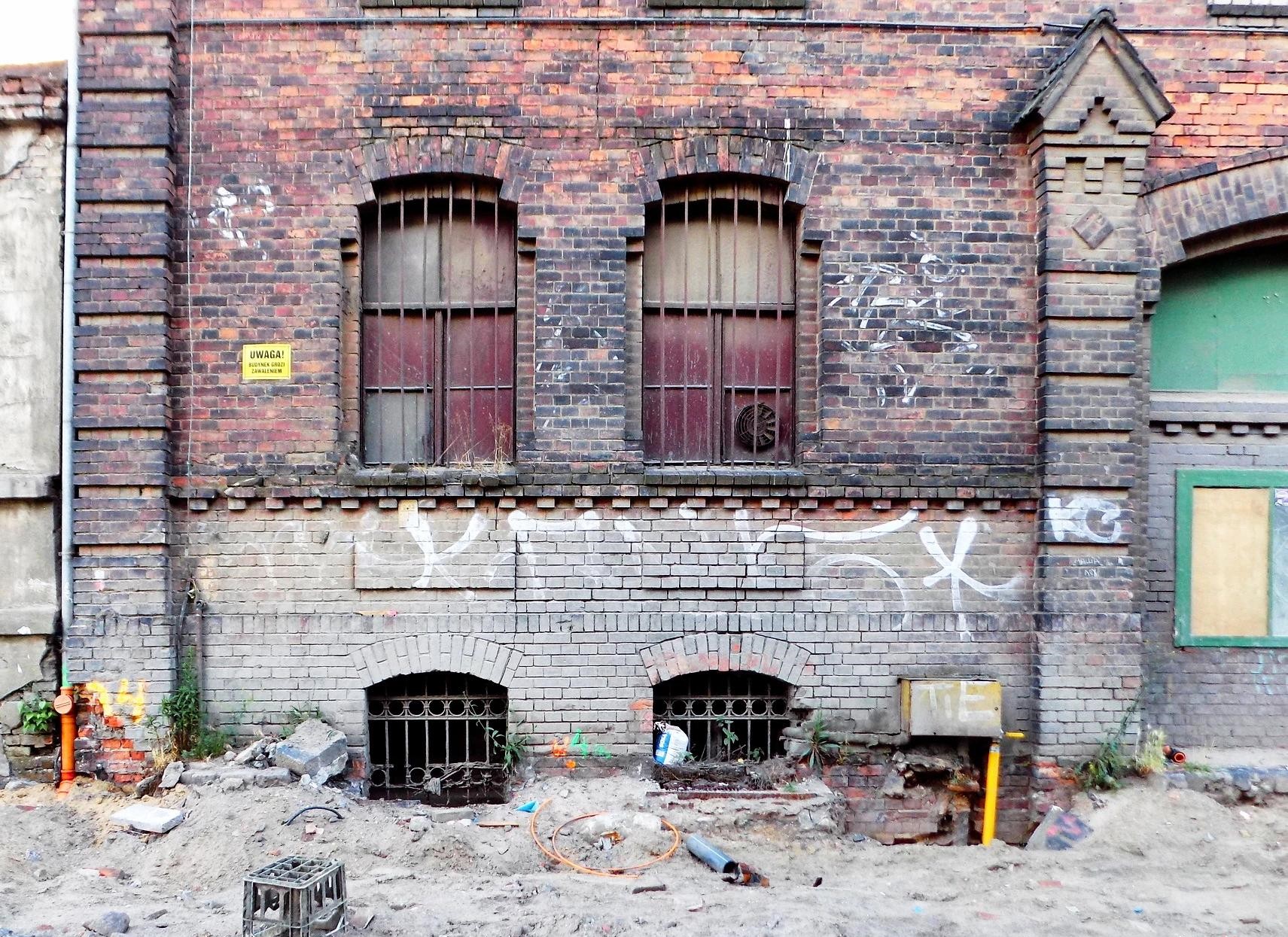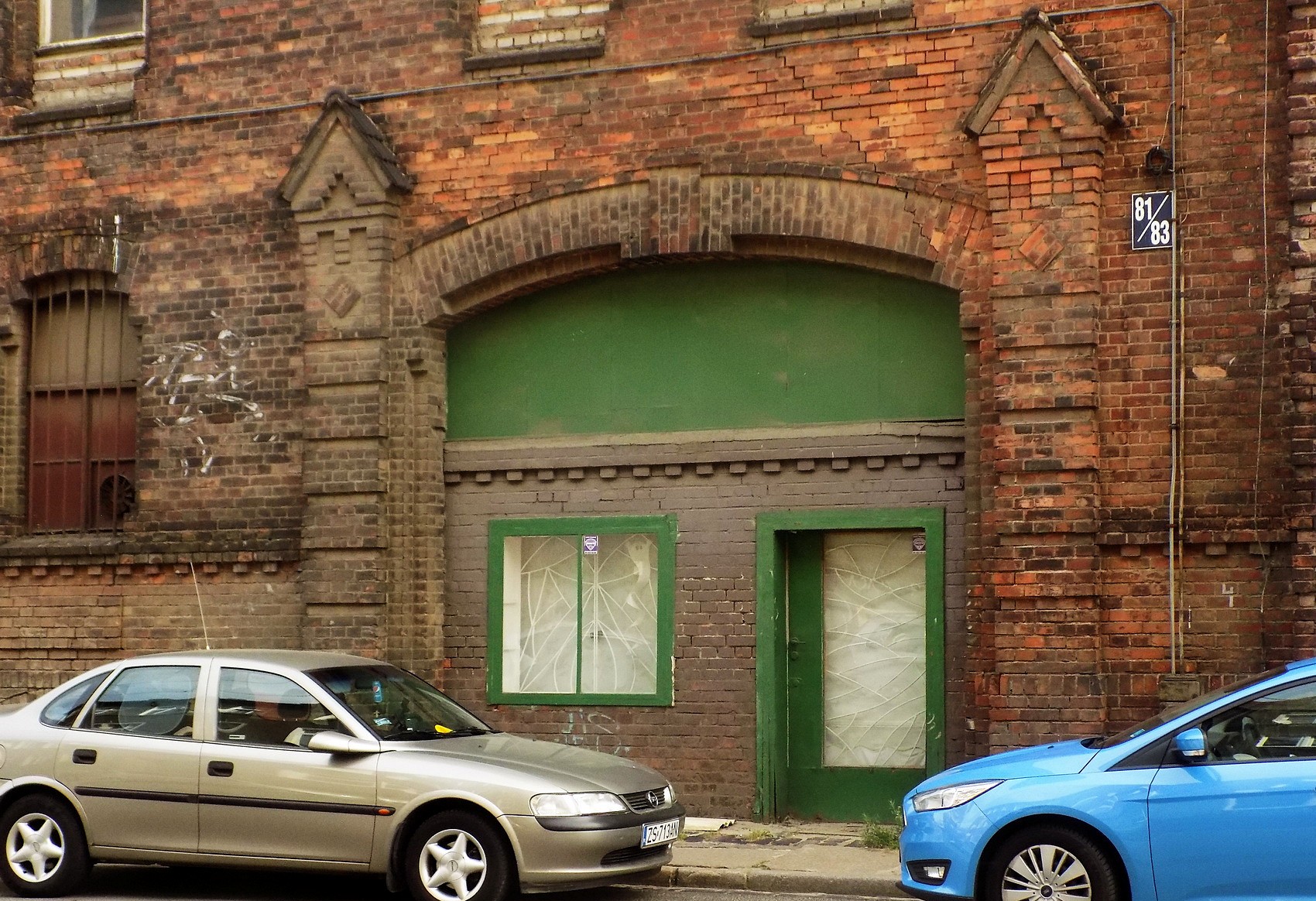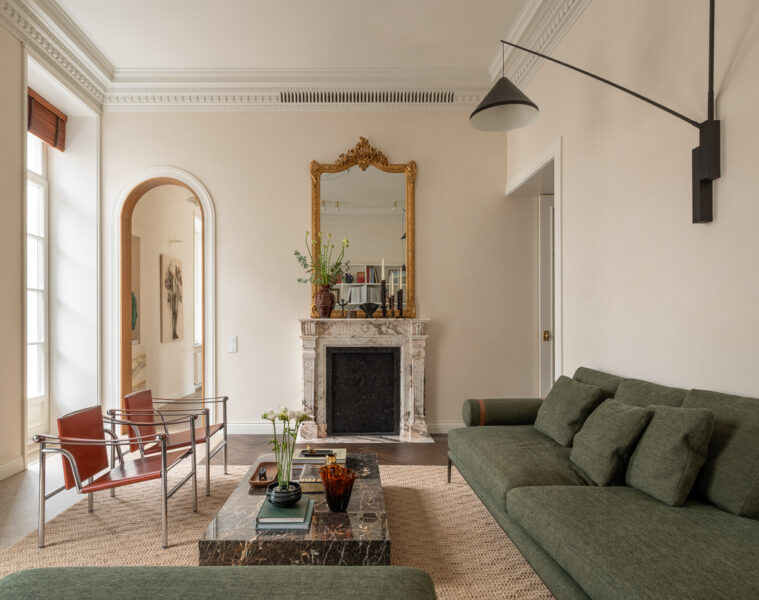The characteristic brick buildings rising picturesquely above the Oder River in Szczecin make an impressive yet depressing impression. The buildings, which have been dilapidated for years, were formerly used to produce alcohol and yeast, known throughout Germany. Particularly unique is the location of these historic buildings, directly on the banks of the Oder – hence the common name – “Szczecin Venice”.
The former name of the street was Oberwieck/Oberwiekstrasse (Upper Wik, a suburb of the Old Town already known in the Middle Ages). From the 19th century onwards, industrial plants were established along Kolumba Street and the area is still characterised by factory buildings.
A perspective of Kolumba Street with the buildings of the former winery in 1997. Photo author: Mariusz Brzezinski/photopolska.eu
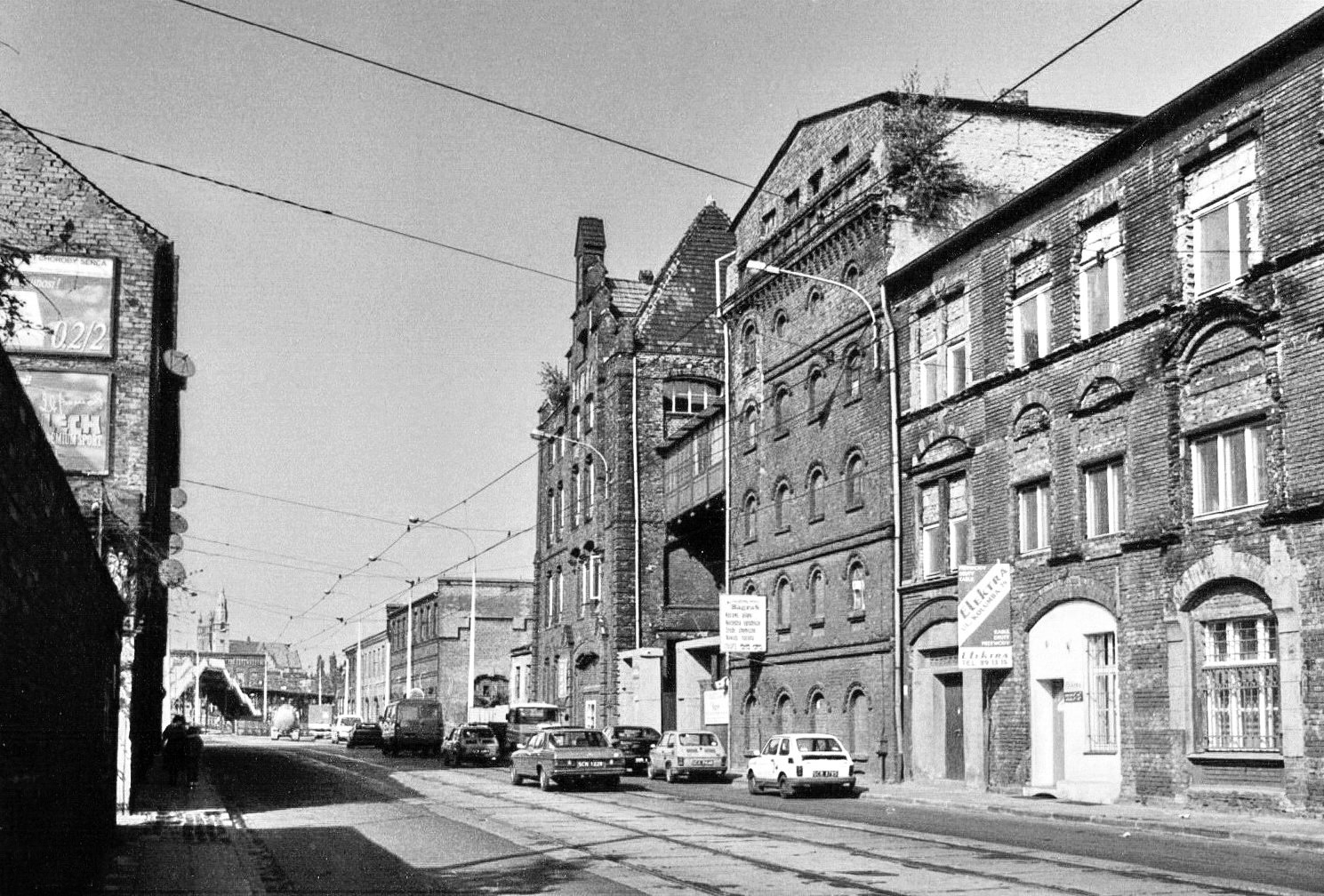
The property at 81-83 Kolumba Street belonged from 1899 to C. Lefever. In 1900 he applied to the Building Police of the Szczecin Municipal Office for permission to build a 5-storey factory building. Two years later, a new warehouse was erected on the plot, followed by another one a year later. The new warehouse was connected with the factory building by a covered porch suspended over the fourth storey. In 1905, the part located directly on the Oder River was extended. Due to the location right next to the river and the muddy ground, the buildings are founded on concrete floors set on wooden piles. The new complex was built in a neo-Gothic style, which emphasised its importance and made it stand out from the surrounding buildings. The Lefever factory, together with two other companies, covered about one-fifth of Germany’s yeast demand. In 1924, the Lefever factory became part of Rückforth-Konzern. Just before the war, Karl Gless became the new owner of the buildings, managing the company Waren- und Herings – Großhandlung Kaffee – und Getreide – Großfösterei.
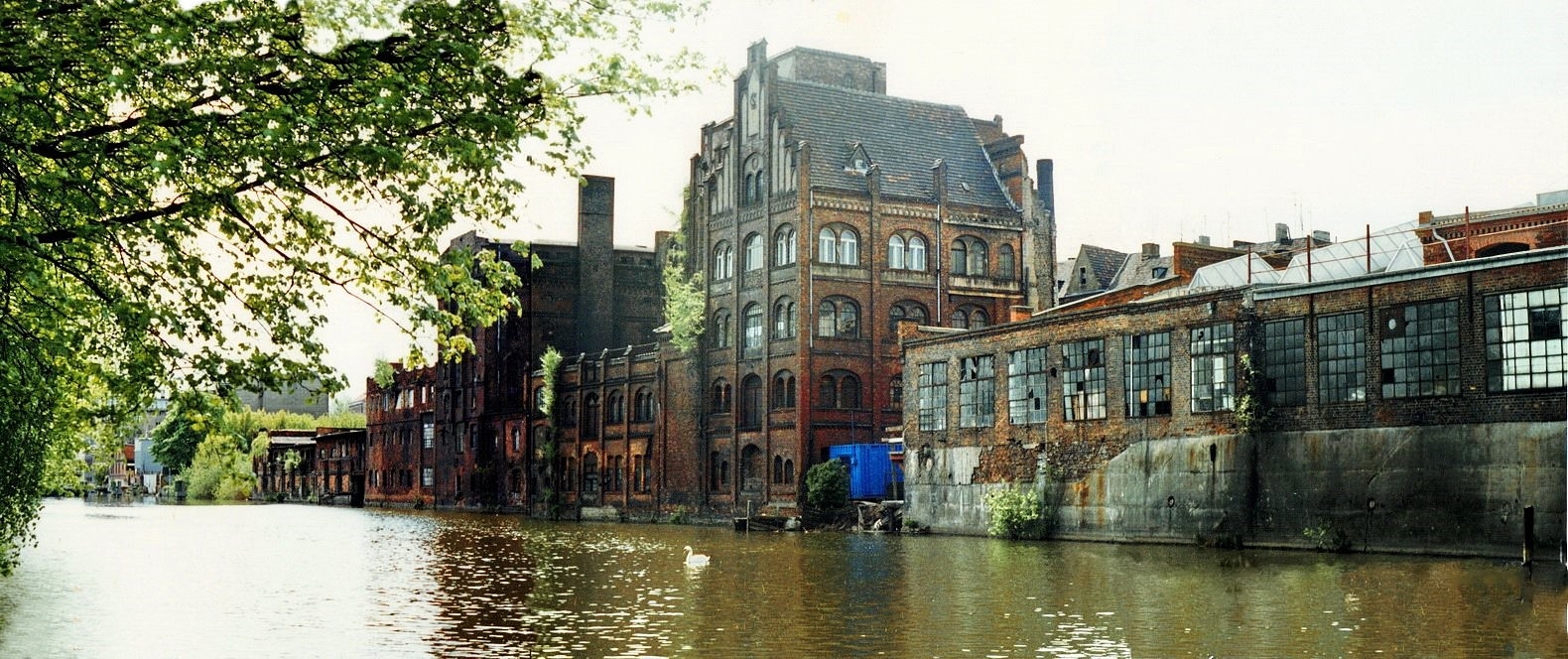
During the wartime bombing only the residential building located on the property was destroyed. In 1951 the complex was handed over for use to the Horticultural Centre, which installed a fruit and vegetable processing plant in the buildings, and from 1958 also a wine-making facility. Subsequently, the buildings remained in the use of horticulture-related companies for many years. Today, the post-industrial monument is abandoned. In 2007, the city sold the property to a Warsaw developer. Renovation of the building was announced at the time, but major work never started. At the beginning of this year, the owner, the Warsaw-based developer WSD Investment, carried out conservation work in the historic complex of the former yeast factory. Firstly, he tackled the link hanging at the height of the fourth storey. Earlier, the roof over the former jam factory was replaced. There are also plans to protect the chimney standing on the Oder side.
However, major conservation and renovation work cannot be counted on in the near future. “Szczecin’s Venice” has enormous potential and is unique in the whole country. It is therefore surprising and sad that for so many years it has not received the proper treatment and renovation that it undoubtedly deserves. Will ad hoc conservation work be enough to protect the monument?
Source: wszczecinie.pl, szczecin.naszemiasto.pl, opencaching.pl
Read also: Architecture in Poland | Monument | History | Szczecin | Brick

